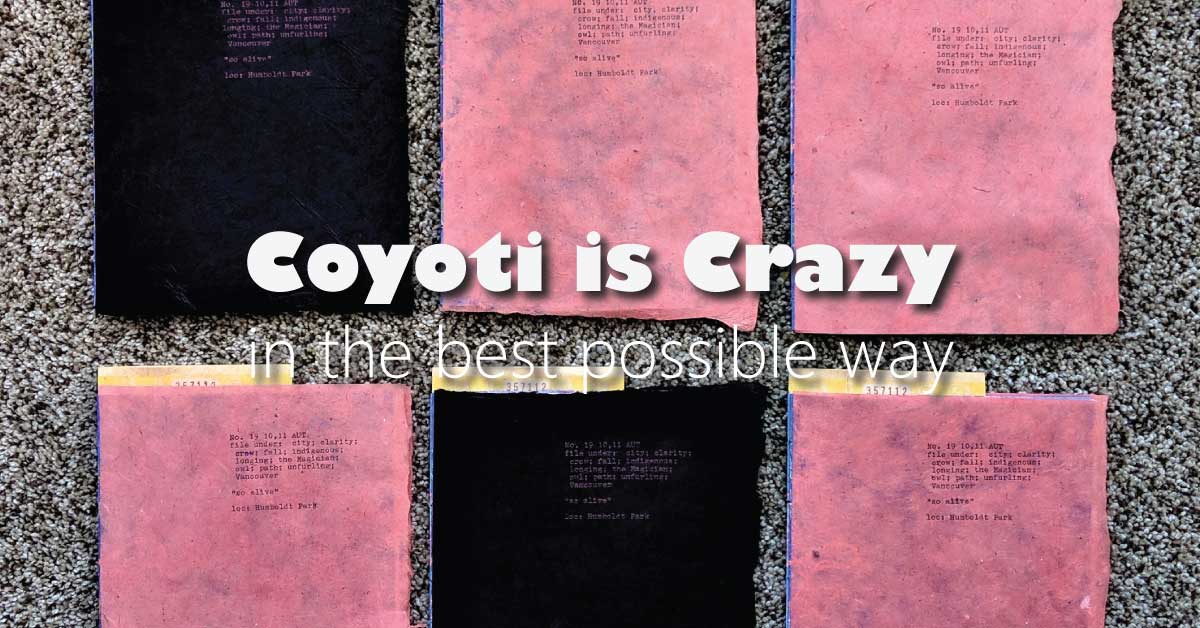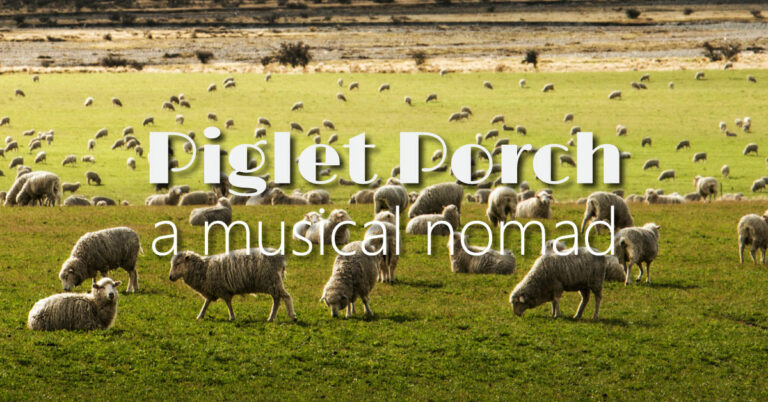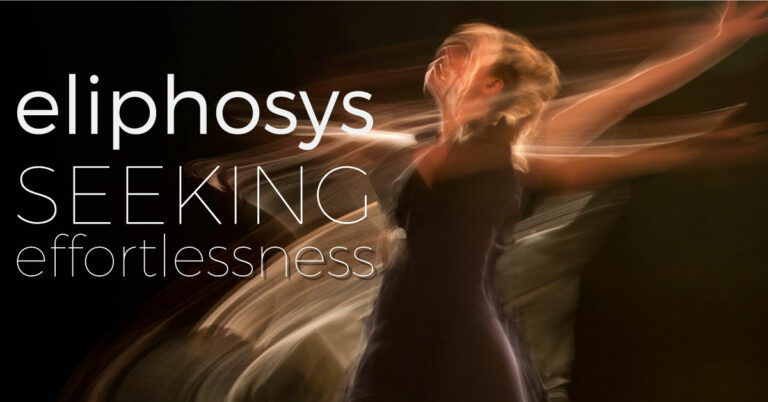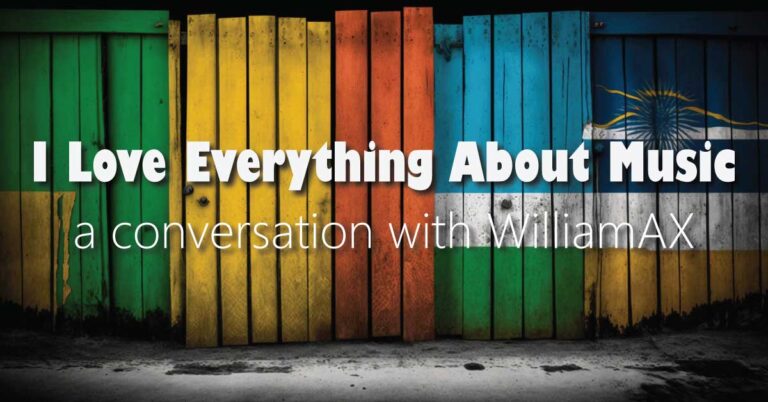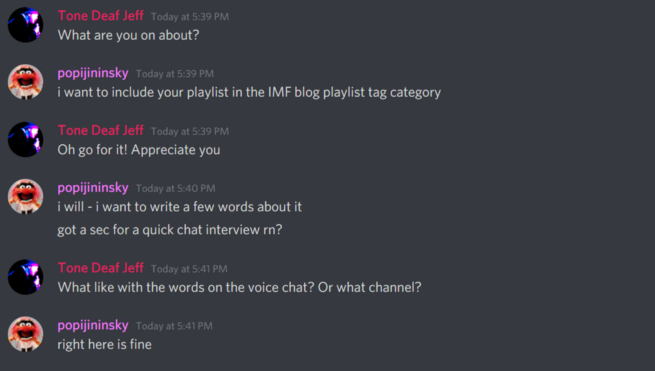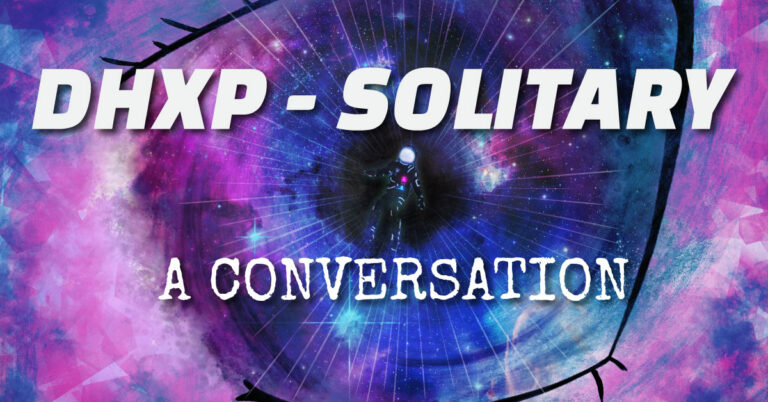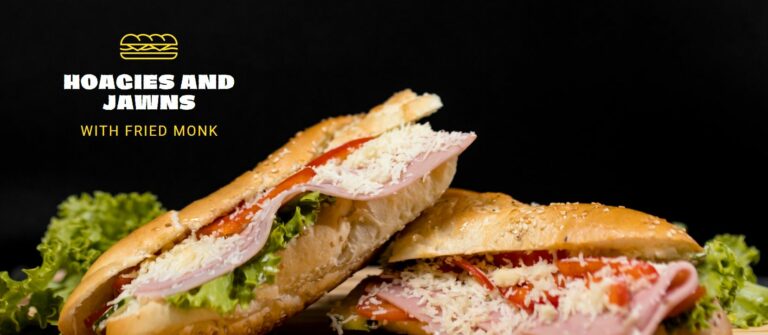This is part of a long-running series called Why We Create, where I talk to producers, composers, and musicians from the extended IMF community, and from all over the world. We talk about about what makes each person tick creatively, what they get from making and sharing their work with others, and what drives them to create.
Coyoti (aka Echo the Human) makes stripped down lofi punk-inflected psychedelia that sounds like back alleys and lucid dreams and dirty next-morning ashtrays, with her dreamy, echoey vocals a misty breeze wafting through. She recently released an EP called Under the Bed, and is assembling a compilation of remixes of tracks from that album, to be released really really soon. She’s also a sound collagist, an eclectic visual artist and writer committed to authenticity in all she does.
I got a chance to sit down for an interview with Coyoti recently. We talked about her various creative endeavors, her youth as child of indie musicians, and the sources of her drive and inspiration.
She and I made a spoken word piece for Indie for a Cause Vol 3. You can check out both her album and that track at the links to the right.
Our interview is below, edited for clarity and brevity. Please enjoy.
-popijininsky
How did you discover music?
A lot of my family were musicians – my parents and lots of my uncles and cousins. I grew up with music all around me. My parents were in a couple bands together that were pretty well-known in the Chicago scene. One was called No More Wars—that band played with Steve Albini, opening for Big Black, and growing up I heard lots of stories about them. Permabuzz came later – it was kind of a surf punk band, with a real distinct Chicago sound, and I really loved them. Both my parents are really passionate about music – they still both write and play songs, even though they don’t really record and perform anymore.
How did you relate to that musical experience?
I remember my parents being at their happiest when they were doing musical things. I could really see and feel their joy. They’ve always been their best selves when playing and making music. Sometimes their songs would come on the radio, and we’d all just dance, and it was really pure joy. We’d go over to my aunt’s house sometimes, and they’d have band practice in the basement. The sound of a band practice happening in the house is a really strong memory that evokes a specific feeling for me.
Your music reminds me of the sound of the practice studio – is that intentional?
Sort of. I really like lo-fidelity sound. I love punk rock, and the bedroom recording aesthetic. I’m still also really just learning to record and produce, so the sound of my music is sometimes the sound of my technical limits, and I fully embrace that. I love hearing the recordings of amateur producers who simply want to share their songs.
Why did it take so long for you to pick up an instrument yourself?
I’ve always consumed a lot of music, and really appreciated it. But what I think happened is that I got my own place. I rented an apartment that had an artist studio, which I did so I could make art. And my passion for making music started when I was living in that space. I didn’t really think about playing or composing music until then. I started by picking up the bass, because it just seemed kind of necessary. Maybe I just needed my own space to do it.
Why start with bass?
I’ve just really always loved the bass. My dad was a bass player, which is part of it. But I’ve always been drawn to the instrument, and to singing. Maybe it’s because my voice is kind of high pitched, and the bass is a good accompaniment to it.
Are you planning to perform live now that the pandemic is receding?
I’m really excited to get out and perform with other people. I started a a band, and we’re going to perform my new album live together. I’ve never been in a band before. I’ve collaborated with other musicians, but I’ve never had to work with a group to learn songs and perform. It’s a fun new project for me.
You just finished an artist residency – tell me about that.
I just got back from two months in Mexico City. I lived in a house with a bunch of other artists, and we shared a studio. There were a couple other Americans, along with a couple Europeans, in the program with me.
I created an artist book, and a sound collage installation that went with it. At the end of the residency, it was in a group show with the work of all the other artists in the program. The whole thing was really great – it was a life-changing experience.
What actually is an artist book?
It’s more like a sculpture than a book you’d read – it’s a piece of art that really makes the viewer think about the form and experience of a book. It’s not necessarily meant to be used that way, though…to be read from cover to cover.
I’ve made a few books before this one. I started out making books that were full of collages of photocopies, kind of like ‘zines. Then I moved on to ink paintings for some other books. But this one is linocut and a bit of gouache.
The paper was one of the most important parts of this book. I knew I wanted to find special handmade paper in Mexico. And I immediately found this beautiful paper called amate paper, which is made from the bark of the amate tree.
Indigenous Mexicans used to make and use the paper for documents and rituals. The Spanish missionaries burned all the documents they could find, and prohibited the manufacturing of amate paper. It was about imposing Christianity on the native people, and any of their traditions needed to go. Somehow the process survived and has been brought back by indigenous people in southern Mexico. The process for making it is basically unchanged from pre-Colombian times.
So, I ended up drawing from colonial themes, and making a divination book, which is a non-Christian thing. The paper – the material – really added to the story and process for me. I carved all sorts of conquistadores, and donkeys, and things like that. But I also did scorpions and taxi cabs and everyday things I saw in the city. And my grandmother’s face—she was Mexican, and passed a few years ago. One of the primary reasons I wanted to do this residency in Mexico was to connect with her, and I ended up including her image in the project.
What I really wanted was for someone to flip through the book, and experience the images sort of subliminally. I tried not to be too overt with any kind of messaging, but just let people’s experience unfold based on images that resonated with me. I named it El Ojo Oculto, which means ‘the hidden eye’.
And what about the sound collage that goes with it?
That’s called La Oreja Oculta (the hidden ear). I made a bunch of field recordings from around the city, and glitched out those sounds a bit, and added a little bit of guitar and vocal. It’s a loop that’s about 15 minutes long. I’d like to turn it into an EP and release it as music at some point. The sound collage would run through the whole thing, and I’d add some more musical elements to turn it into a series of songs.
How did you find your way to visual art?
I’ve always done art, since I was a child. I’ve never really pursued it professionally, and I didn’t go to art school. I made punk zines, and then art zines, then branched out from there. It’s a passion I’ve always tried to nurture.
Art has always been important to create things. Even if artist books and EPs of my music don’t pay the bills, I’m still planning to make more music, and do more artist residencies.
Professionally, I’m a freelance writer – I do blog posts, articles, all sorts of things. I like that I can be creative with the writing. It’s hard work, but I enjoy it. Even writing corporate blog posts make me want to push myself and make something really good. I don’t really see the point of half-assing anything. I ask myself, “when is it going to become something true, and real?” That’s always the idea.
Does this mean what you do is goal oriented?
Not always. I just sort of stay with things until the truth comes out.
Here’s an example that might explain it better: I was really inspired by visiting Frida Kahlo’s Blue House. It was really great for me to see how she and Diego Rivera lived and worked together, but really looking at her work in that context really brought it home for me.
Her paintings, especially her self-portraits, are beautiful. But the thing that makes them great isn’t their beauty, it’s her ability to show her pain in the photos. She’s always looking straight at you, surrounded by angry monkeys and ribbons of blood. There’s a deeper meaning in them that goes beyond the bright colors and her technical ability.
Is it important to you that whatever meaning you’re trying to get into a thing comes through?
Not really. I do hope that what I do strikes a chord with someone, but it’s not necessary that they experience it the way I do. The sharing of my work is important, and it was great to experience this directly in my residency – to be at the opening of the show and see how other people were engaging with my work.
It really caught me off guard to be at the show. I thought I was done with the project because the book and recording were done. But the experience of witnessing people interact with what I had made actually brought a tear to my eye. And when I talked to them, and heard their impressions of my images and sounds…it was mind-blowing, and really caught me off guard. It was amazing, actually.
Did that experience help you understand your work differently?
I was really happy with how the show was received. I’m excited to make more art and share it, and experience more of the reflected experience of others.
It’s similar to when I released the Under The Bed – the amount of joy I got when people told me that they listened to my music was incredible. It’s amazing that people hear it, and take the time to listen. Some of them even make the effort to form and share opinions about it.
I was kind of surprised that different people seem to resonate with different songs on the album, which is satisfying. Each of the songs comes from a different place for me, and it’s great that different people engage with those different experiences.
I always want to avoid being influenced by my idea of what people want to hear. I’d rather make a strange album that really has meaning for me, instead of something catchy and pretty-sounding that doesn’t have that meaning.
I wonder sometimes what music might sound like if everyone who can’t play or make music could create songs. I like to think that for each person, it would be unlike anything you’ve ever heard…that each person would make something totally unique. And I want to make that music for me—the music that’s uniquely mine.
In IMF, I really appreciate that there are a lot of individuals that express themselves in different styles. I enjoy people’s efforts to express themselves. There’s such a range of styles in that community.
Tell me about your remix album
As I was putting together my album, I heard from motoma and TVLA, who both reached out and asked if they could remix songs from the album. And I thought it would be great if other people would do the same. I got such a great variety of different takes on the songs, from IMF members, and people here in Chicago. Most of the songs on the album will get remixes. I think I’ll release it in May.
How do you feel about interacting with other creative people and working together?
It’s great – it’s really inspiring for me to see that other people are doing this crazy thing—creating things feels kind of crazy for me—it’s validating. The remix album for me is what I hope will be the start of me collaborating more with other musicians and artists.
For my debut album, it was really important to me to do all the recording and production myself. Some of this is because of my experience as a woman making music…I feel like the world is still catching up to the idea that women can be relevant in this space. When I’ve shared my music with others, I’ve gotten questions like “who played guitar for you on this?”, and that’s been a bit hurtful, and frustrating…I’m passionate about the entire craft, not just singing. So, I decided I really wanted to do it all myself, and to be able to say, “I did all of it.” It seemed like the only way to avoid being underestimated just because I’m a woman.
You’re part of the Women of IMF – what’s that like?
It’s a little safer, a little tighter knit, than the broader IMF community. It’s a place where I can talk about the experience of making music as a woman, and don’t feel like I need to explain myself…the other women there just get it.
We’ve started doing round-robin tracks as a group, which is really exciting and satisfying. It’s kind of like a band or a record label, and we’re doing a compilation. It was a really supportive and fun experience, which hasn’t always been true for me in the past when I’ve done similar things in a mixed environment.
Tell me about your internet radio show
I’ve been making mixes and uploading them to Mixcloud for a while. I started doing it because I was listening to Berlin Community Radio online, and it was all young people making experimental sets of punk, and house music, and ASMR, and anything. It was really inspiring for me.
Listening to music has always been really important for me. To be able to share what I’m hearing and through in some commentary, or some sound collage, or whatever, seemed like a relatively simple way to share inspiration with other people. My friend Bug invited me to do sets on Volumelithic, and that was fun. The thing I was making on my own turned into something I could share with a community of people. Listeners are invited to listen, but also to interact with creators – it’s a really cool environment. So instead of having this one-way experience, I decided to make myself a little vulnerable and share the experience, and invite other people into it.
The whole radio show thing felt peripheral to me at first—not really connected with my other creative work, but more recently it’s starting to feel more integrated into the rest of my work.
What do you get out of being in community with other creators?
It’s like any other kind of community. It’s a network of care, and support. There were so many points in time when I was writing a song, or mixing or whatever, when a simple thing would just totally stop me in my tracks, and the IMF community allowed me to get unstuck really quickly. But beyond that, it keeps me on my toes. Creating is so important to me. I don’t think I can function well without making things…I would be a husk of a human.
Being around other people who also need to create is really validating. Sometimes I can get depressed or stressed out, and neglect my creativity, and wonder why I’m more sad, or more stressed. And seeing other people do great things, it reminds me that I also need to do that.
There’s such a huge variety of music and art. And being part of a community allows me to experience all that, and it’s truly inspiring.
Why is creativity crazy?
I often get trapped in my creativity, and suddenly ask myself, “Why am I doing this – why am I making this strange thing from nothing?” Creativity isn’t like other things I do…I eat food because I need to eat to live. And I buy clothes because I need to wear them to stay warm. I work because I need money to live. But creativity isn’t like those things, and it feels crazy sometimes that I feel like I need to do it. And it makes it easier and clearer for me when I see other people make things, and I can experience the joy and excitement of their work, and it reminds me why I’m doing what I do.
Then I go back to work.
I can survive without making music and art…I can live, but I’m not sure I would really be alive. I don’t want to sound pretentious, but I learned that I really can’t be my true self, or my best self, or even just OK, if I don’t nurture my creative life.
Maybe it’s because creativity adds meaning for me. A big part of my motivation is documenting my experience, in kind of a scientific way. I think about how my work can store memories and be a catalog and archive of them. This idea grounds me. Life is chaotic, and unpredictable. And being able to process that into a book, or a song, or whatever. It’s really satisfying.
